The Petah Tikva Museum of Art, which I recently visited to review a cluster of new exhibitions, is located a mere 10 km. eastward of Tel Aviv. But once within its halls, the six new solo exhibitions currently on view had sent me traveling both in time and in space. In my mind, the hour-long commute did not result only in a cultural tour but rather transported me far off to the celestials and then back down to Austria and France pre- and after World War II, as well as to rural Maine in the United States.
Did I truly occupy all of these spaces at once? Perhaps not, but the works showcased at the museum certainly triggered memories of theories and stories from these far-flung locations. And stories, be they precise or manipulated by cultural and historical circumstances, are expressly the central theme claiming to unite the eclectic bodies of work displayed, which all answer to the umbrella title – True Stories.
<br>Stories of entrapment
The first artworks to greet visitors at the entrance to the museum are the gracefully monstrous self-portraits of Arab Israeli artist Karim Abu Shakra, an Umm el-Fahm-based painter with strong familial ties to the local art world. Abu Shakra points to his uncle, the iconic painter Asim Abu Shakra who passed away prematurely in 1990, as a source of pride and inspiration.
In recent years, the interest in Abu Shakra has been steadily growing (his next solo show is due at the Ein Harod Museum of Art), and with it the attempts to heap layers of meaning onto the recurring motifs in his work. These daunting facts may have stood in the way of Neta Gal-Atzmon, who was tasked with curating What Is Met By Me As Face, Abu Shakra’s solo show at the museum. In describing his new paintings, she summoned philosopher Emmanuel Levinas’s writing about the encounter with the Other in order to describe the mental quality of Abu Shakra’s densely-colored portraits. She even compared the pained and disturbingly exposed visages he paints to the famously distorted portraiture of Francis Bacon.
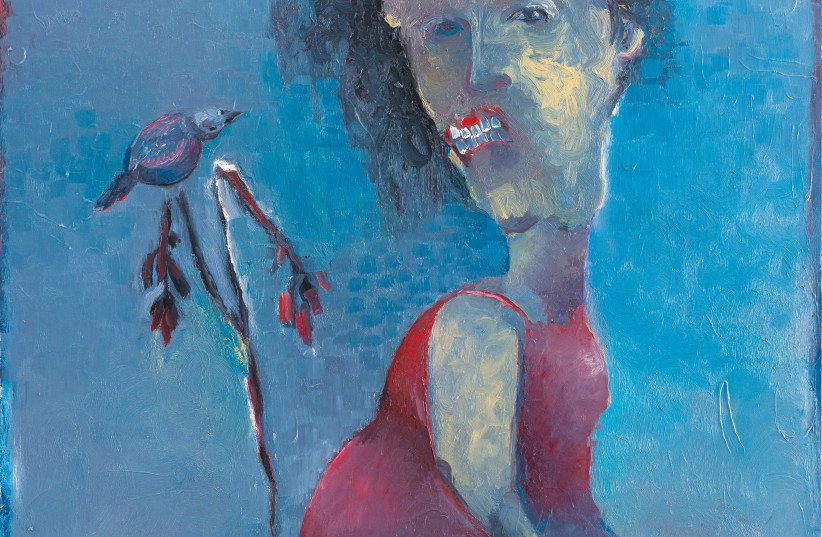
The clever associations Gal-Atzmon opted for are just, but it seems that Abu Shakra’s works require less words and rather more space to be properly contemplated. His immense canvases, on which he layers his thick, swirling brushstrokes, could have benefited from a sparser installation and a more economical selection process. The paintings featuring Abu Shakra’s preoccupation with the depiction of the prickly sabra, a theme he borrows to correspond with his late uncle who used the plant as a symbol of the suffering of Palestinian refugees, don’t necessarily deserve the central stage they were given.
His more riveting works are the smaller portraits, such as an untitled painting from 2019 of a woman seen against a fading blue backdrop, her disproportionate torso covered in a red dress and a cloud of black but shorn hair billowing around her. Twisted sideways in an uncomfortable-looking position, the subject of Abu Shakra’s portrait is seated next to a wilting flower, beside which the artist painted a bird in mid-flight but turned upside down, as though he observed it mid-fall.
This painting speaks volumes, telling a story of inner turmoil and stagnation, that of a bird that cannot fly or of a woman who cannot set herself free. The contorted position of the dark-haired woman brings to mind a canonic work of art that also tells a tale of disability: Christina’s World, a 1948 painting by US artist Andrew Wyeth, who painted an outdoors portrait of Anna Christina Olson, a woman who suffered from a muscle disorder that made her unable to walk. Wyeth painted Olson crawling, torso and limbs askew, in a field outside a summer house he owned in Maine. I use the physical and mental handicap evoked by Wyeth’s work, which is echoed in Abu Shakra’s, to elucidate a fine point about the latter’s strength as a painter: His best work emerges when he turns his gaze on others, capturing something of their essence that may allude to a personal and national sensitivity surrounding the notion of immobility.
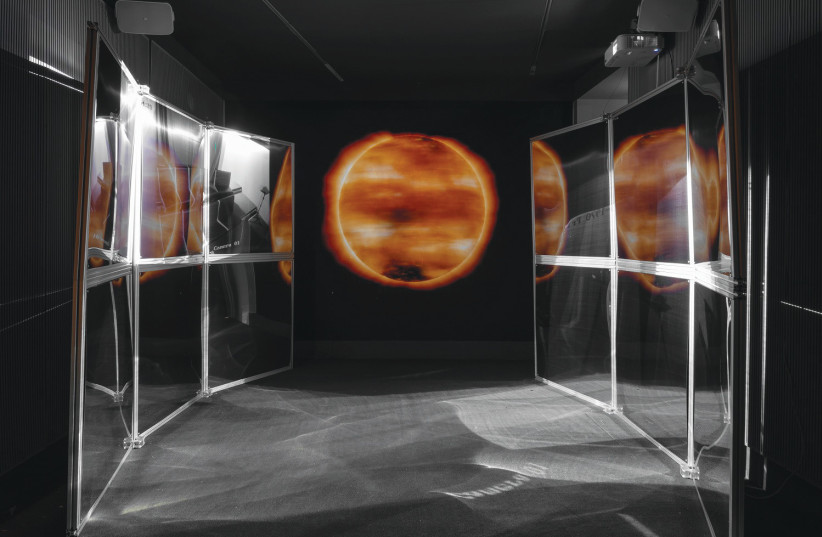
Stories of domestic and alien spaces
I have written here before about how the concept of the uncanny – a term dating back to Sigmund Freud’s 1919 essay, in which he defined the feeling of alienation evoked by a familiar object or space, especially within the home environment – has been explored to exhaustion in the history of postmodern art.
However, the intimate and refreshing exhibition Mia and I by the artist Reut Asimini forces me to contradict myself and reflect on this term anew, this time through the prism of the multidisciplinary artist’s unabashedly personal and surprisingly poetic series of drawings created over the course of the past two years. Kudos are due to the sensitive curator Irena Gordon, who invited Asimini to present pencil drawings on paper that the artist initially posted on Facebook when COVID-19 first broke out, and which slowly accrued into a vulnerable visual journal that tells the story of a young mother trapped indoors with her 18-month-old baby.
Asimini used her toddler’s frenetic scrawls, untainted yet by the aesthetic awareness that comes with age, and added to them her own art to discuss her maternal and personal fears, frustrations and small triumphs. Children’s art has occupied countless masters, from Paul Klee to Wassily Kandinsky, but Asmini’s innovation lies in the decision to use her child’s art as a launchpad for her own artistic ruminations on the uncanny nature of being an artist, a mother and an individual in a historical period of uncertainty – thus lending the framed papers an uncanny appearance.
In one highly evocative drawing, Asmini uses the infant Mia’s large, red scrawls and turns them into a mess that a figure modeled after herself attempts to wipe away in the living room with the help of a vacuum cleaner. In another work, Mia’s red doodles become a gust of wind which the mother tries to ward off with outstretched arms, while her daughter is seen playing, joyfully unaware of the looming menace.
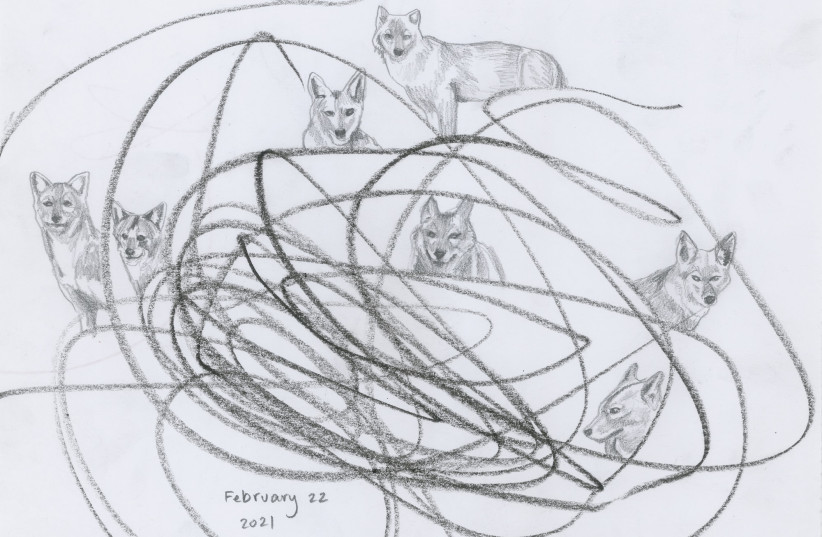
Looking at these works, some of which were accompanied by revealing texts Asimini had penned, I couldn’t help but think back to a crucial text by yet another psychoanalyst. In his book of 1951, Transitional Objects and Transitional Phenomena, Donald Winnicott describes the inevitable process through which mother and child slowly undo the emotional umbilical cord. As the former adjusts to the mundane tragedy of the latter’s detachment from her on the path to cultivating individuality, “the good-enough mother… as time proceeds she adapts less and less completely, gradually, according to the infant’s growing ability to deal with her failure.”
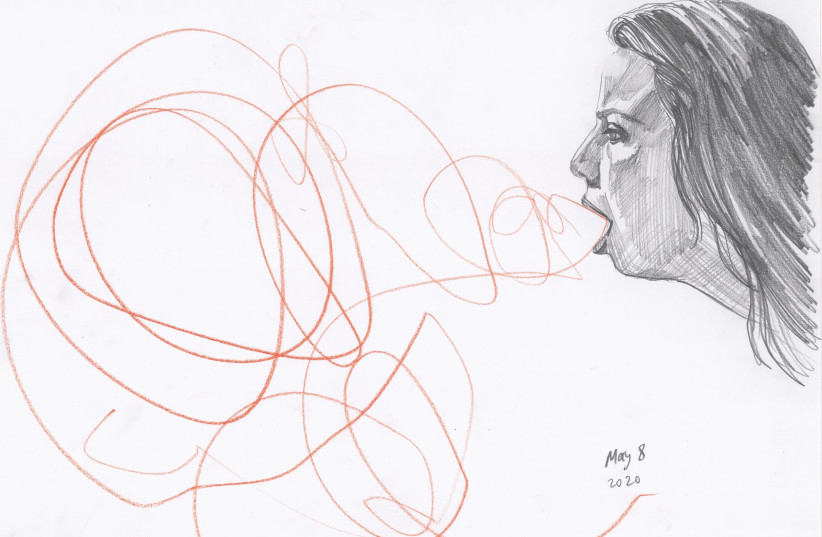
Viewed through this lens, Asimini’s drawings appear to be at once transitional objects and the silent documents bearing witness to the slow, sad but nonetheless significant transitional phase of undoing the mother-child symbiosis.
<br>Stories from outer and inner space
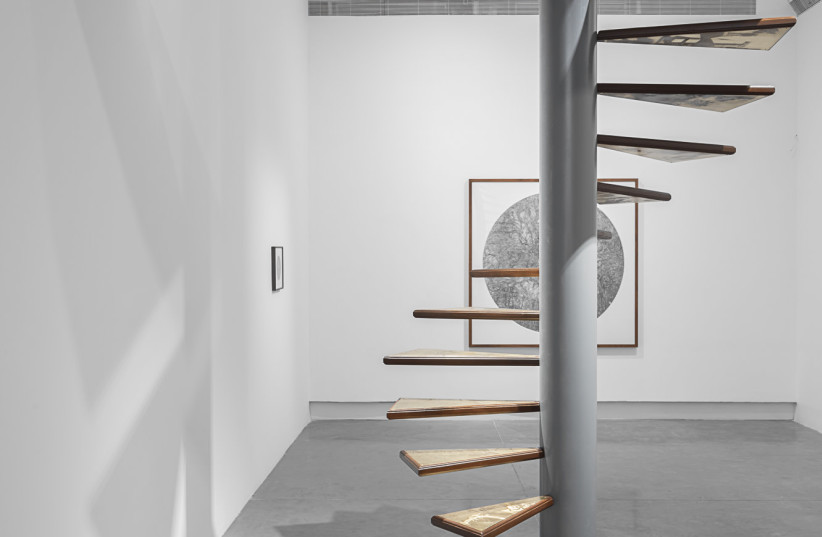
Last but not least, are the two strongest exhibitions presented at Petach Tikva: Atlas II, by the emerging artist Sharon Azagi, and Perek Chelek (Portion of the World To Come) by the more established Raya Bruckenthal.
In 1967, French philosopher Michel Foucault gave a lecture titled “Des Espaces Autres” (“Of Other Spaces” in English). In it, he provided the most extensive explanation for a term he invented, known as heterotopias (as opposed to utopias). Heterotopias, according to him, are discursive spaces that are somehow other: Intense, incongruent with our perception, transformative. They are spaces within spaces, such as ships or cemeteries.
In “Atlas II,” Azagi appears to skilfully toy with the tension between exhibition space and outer space, manifesting a heterotopia rendered into research and then translated into art. For the installation presented, Azagi used software that was developed especially in order to document the sun. The software analyzes the frequencies of the sun’s radiation, which are then transported to Earth through a radio telescope that was sent to space in 2010 via the Atlas II spaceship. The system then processes the frequencies, calculating the sun’s location in relation to our planet, and turns them into musical notes that are played by a digital organ heard in the room. One needn’t be a scientist nor an artist to be moved by the singular process Azagi has manifested. It allows the viewer to sit in front of the installation, immerse oneself in the sensory experience and succumb to the sounds.
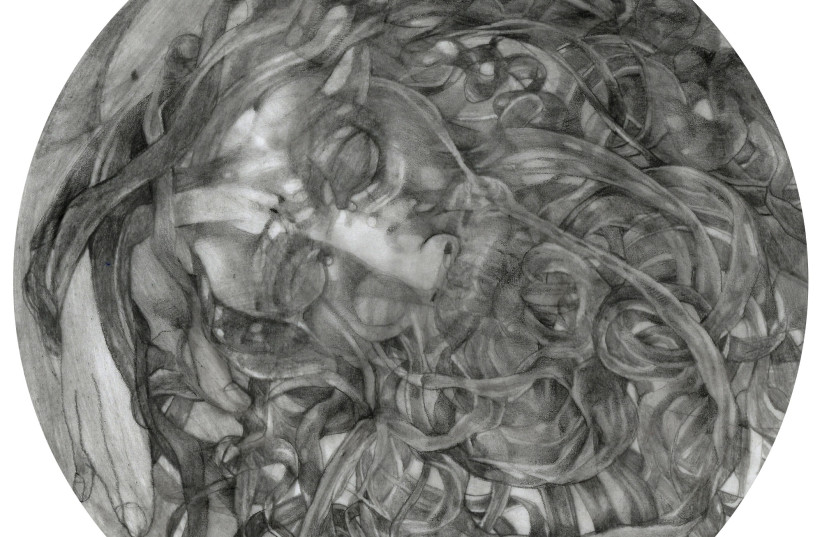
Bruckenthal’s work is inspired by Chapter 10 in the Talmudic tractate Sanhedrin, which deals with redemption, and which includes the verse: “All Israel have a portion in the world to come.” Composed of a series of immaculate drawings, an installation made of a golden, spiral staircase leading to nowhere and a closed-off room dedicated to a sound piece she composed in a vocal take on music created in the 19th century for biblical verses, it is a truly monumental creation boasting the rare combination of spiritual depth and excellent technique. I am still in search of the proper words to describe how irrevocably transformed I was by the audio-visual universe Bruckenthal has created. But for lack of space on the page (pun not intended), I will just urge readers to see it. Once inside her immersive audio installation, I was able to close my eyes and dance. Through the artist’s temporary construction, I was able to slip into a heterotopia.
The True Stories exhibition cluster is on view at the Petah Tikva Museum of Art until May 28, 2022. For visiting hours, go to www.petachtikvamuseum.com/
